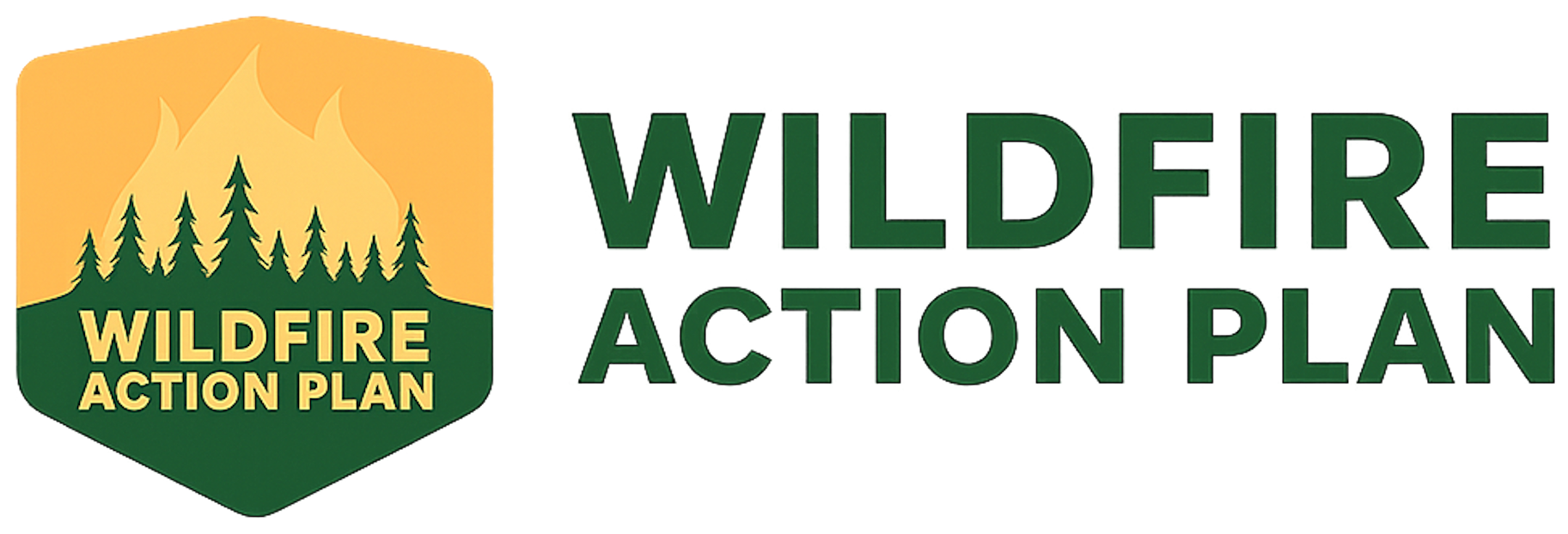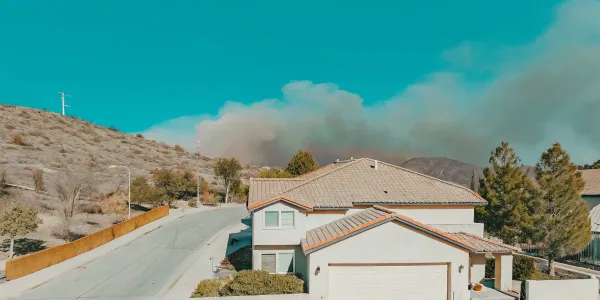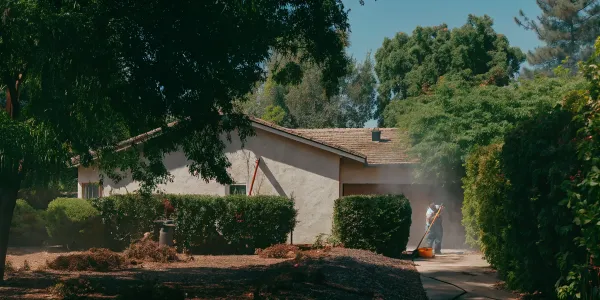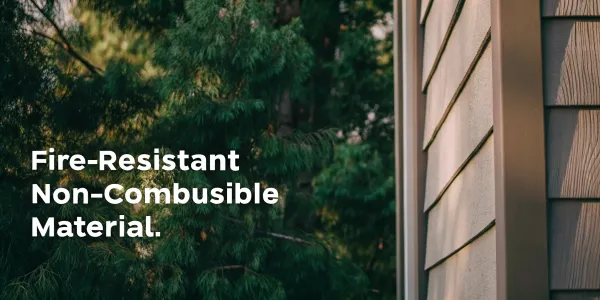The Ultimate Fire Emergency Kit Checklist for Your Home
Get a practical fire emergency kit checklist with essential items, storage tips, and maintenance steps to help your family stay prepared for wildfire evacuation.
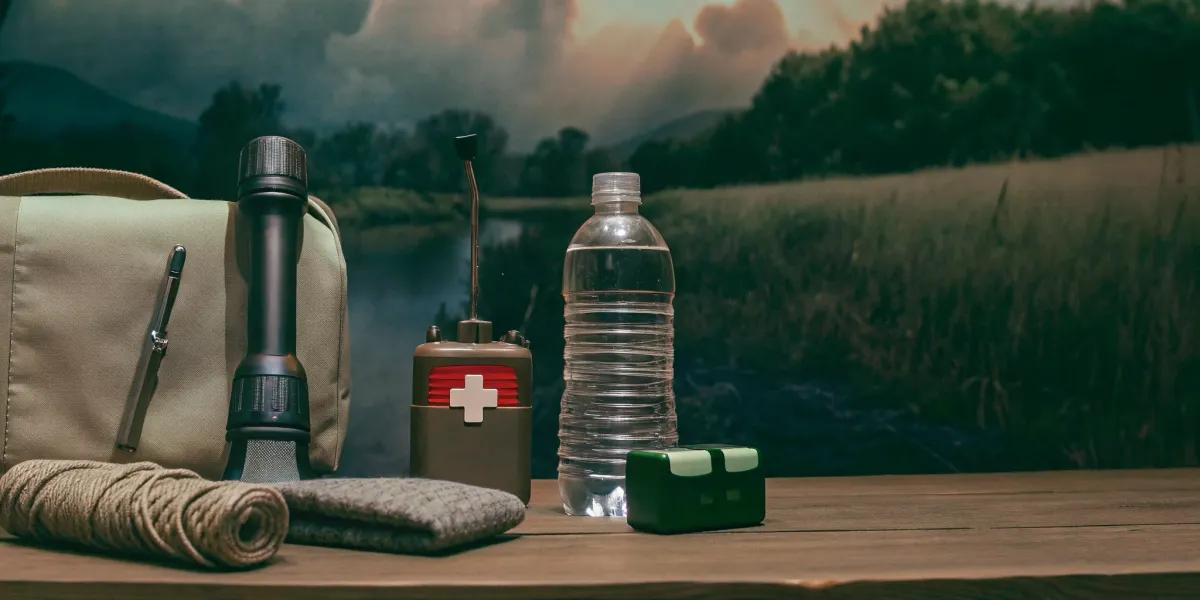
Living in a high-risk fire zone means dealing with more than just the threat of flames; it means navigating a frustrating and uncertain insurance market. While home hardening and defensible space are key to staying insurable, personal preparedness demonstrates a level of seriousness that can’t be ignored. Building a Go Bag is a foundational step in taking control of your family’s safety. It’s a tangible action that proves you are proactive, not reactive. This detailed fire emergency kit checklist will guide you through creating a comprehensive kit, giving you peace of mind and showing you are prepared for the worst-case scenario. It’s about protecting your family first, which is the ultimate risk management strategy.
Key Takeaways
- Customize Your Kit for Your Family's Real Needs: A generic checklist is just a starting point. Your Go Bag becomes a true lifeline when you add personal necessities like a week's worth of medications, baby supplies, extra glasses, and pet food.
- Make Your Kits Easy to Grab and Go: Where you store your kit is as important as what's inside. Keep your main Go Bag by a primary exit and a smaller version in your car to ensure you can evacuate immediately, no matter where you are.
- Treat Your Kit Like a Living Plan, Not a Finished Project: A Go Bag is only reliable if it's maintained. Set a yearly calendar reminder to swap out expired food and medicine, test batteries, and review your documents to ensure your kit is always ready for action.
What Belongs in a Fire Emergency Kit?
When an evacuation order comes, you won’t have time to search for essentials. A well-stocked fire emergency kit, often called a “Go Bag,” is your family’s lifeline. It contains everything you need to survive for several days if you have to leave your home behind. Building one is a critical step in your overall wildfire action plan and gives you peace of mind knowing you’re prepared to protect your family. But what exactly should go in it? Let's break down the essentials.
Why You Need an Emergency Kit
Think of a disaster supplies kit as a collection of fundamental items your household will need in an emergency. Wildfires move incredibly fast, and you may only have minutes to evacuate. In that stressful moment, you won’t have the time or clarity to think about gathering medications, documents, or water bottles. Having a pre-packed kit removes the guesswork and panic from the equation. It ensures that no matter how quickly you have to leave, you have the resources to keep your family safe and comfortable for the first few days after leaving home.
Basic vs. Comprehensive: What's Right for You?
Every emergency kit should start with the basics. According to federal emergency guidelines, this includes water (one gallon per person, per day), a multi-day supply of non-perishable food, a battery-powered or hand-crank radio, and a flashlight. But the basics are just a starting point. The best kit is built for your family. Consider your individual needs: Do you have infants who need formula and diapers? What about prescription medications, extra glasses, or pet food? You can find a more detailed list of additional items to consider, but the goal is to tailor the kit to your unique circumstances.
Why Quick Access Matters
A perfect kit is useless if you can’t find it when you need it most. The entire point of a “Go Bag” is that it’s ready to grab and go at a moment’s notice. CAL FIRE’s emergency supply kit checklist emphasizes that your kit should be easy to carry and immediately accessible for a quick evacuation. Store it in a designated, easy-to-reach spot like a hall closet near the front door or in your garage. Some families keep a primary kit at home and a smaller version in their car. In an emergency, every second counts, and having your kit ready to go can make all the difference.
The Essential Fire Emergency Kit Checklist
When an evacuation order is issued, you won’t have time to think. Panic and confusion can set in, making it nearly impossible to remember every critical item you need. That’s why a pre-packed emergency kit, often called a “Go Bag,” is one of the most important steps you can take to protect your family. Having your essentials ready to go allows you to focus on what matters most: getting to safety quickly.
Think of this checklist as your foundation. Your kit should be tailored to your family’s unique needs, but these categories cover the non-negotiable items every household should have packed and accessible. Once your kit is ready, you can integrate it into your larger evacuation strategy. A complete Wildfire Action Plan helps you organize your evacuation routes, communication plans, and property protection steps all in one place, giving you a clear roadmap when seconds count.
Food and Water
In an emergency, you may not have access to clean water or food for several days. Your kit should contain enough supplies to sustain your family until you can get to a shelter or return home. Plan for a minimum of a three-day supply for each person in your household.
Pack non-perishable foods that are easy to prepare and require no cooking, like protein bars, dried fruit, nuts, and canned goods. Don’t forget to include a manual can opener. For water, the standard recommendation is one gallon per person, per day. Store commercially bottled water, as it is the safest and most reliable option. Mark a calendar to replace these items every six to twelve months to ensure they remain fresh.
First Aid and Medical Supplies
Minor injuries can happen during a stressful evacuation, and access to a pharmacy might be impossible. A well-stocked first aid kit is essential. You can buy a pre-assembled kit or build your own with bandages, antiseptic wipes, pain relievers, gauze, and adhesive tape.
Beyond basic first aid, your kit must include personal medical necessities. Pack at least a seven-day supply of any prescription medications for family members and pets. Include a list of all medications, dosages, and allergies. If anyone wears glasses or contact lenses, pack an extra pair. Having these items on hand can prevent a medical emergency from becoming a crisis.
Important Documents and Records
After a wildfire, proving your identity and ownership of your property is a critical part of the recovery process. Your emergency kit should contain copies of your most important documents in a waterproof and fire-resistant bag.
Include copies of birth certificates, passports, driver’s licenses, social security cards, and insurance policies. Also, add deeds, titles, and recent tax records. It’s also a smart idea to back up these files digitally on a password-protected USB drive or a secure cloud service. Having these records will be invaluable when you need to file insurance claims or apply for assistance. You can find more guidance on what to include from resources like Ready.gov.
Safety and Communication Tools
Power outages are common during wildfires, cutting you off from light and information. Your kit needs tools that work without electricity. Include a flashlight with extra batteries and a battery-powered or hand-crank radio to receive emergency broadcasts and updates from officials.
A whistle is a simple but effective tool for signaling for help if you become trapped. A multi-tool can also be useful for a variety of unexpected situations. Finally, pack a portable power bank and charging cords for your cell phones. While cell service may be spotty, your phone is a vital link to family and emergency services when it works.
Personal and Special Needs Items
Every family is different, and your kit should reflect that. Think through the daily needs of each person in your household, especially those who require special care. This includes infants, toddlers, the elderly, and individuals with disabilities or serious medical conditions.
Pack items like baby formula, diapers, and wipes if you have an infant. For older adults, include any necessary medical equipment or supplies. Don’t forget basic hygiene items like toothbrushes, soap, and feminine hygiene products to maintain comfort and health. These personal touches can make a significant difference in a stressful and uncertain situation.
Pet Supplies
Your pets are part of your family, and they depend on you entirely during an emergency. Prepare a separate Go Bag for them with everything they’ll need for at least three days. This includes food, water, and bowls.
Pack a sturdy leash, harness, and a carrier for safe transport. Make sure your pet’s collar has up-to-date identification tags. It’s also wise to include copies of their medical records, a recent photo of you with your pet to prove ownership, and any necessary medications. A favorite toy or blanket can also help reduce their stress. Planning for your pets is a key part of a successful evacuation plan.
Where to Store and Organize Your Kit
Having a well-stocked emergency kit is a critical first step, but it won’t help if you can’t find it when you need it most. Where you store your kit and how you organize it are just as important as what’s inside. When an evacuation order comes, you might only have minutes to leave your home. Thinking through storage and organization now will save you precious time and reduce stress during an emergency. The goal is to make your kit a simple, grab-and-go solution for your entire family, ensuring you can act quickly and confidently.
Find the Right Storage Locations
Your primary emergency kit should be stored in a cool, dark place that you can get to in a hurry. Think about your most likely exit path during an evacuation. A front hall closet, a mudroom by the garage door, or a clearly marked spot inside the garage are all excellent choices. The key is to make sure it’s accessible for quick evacuation and easy for every member of the household to grab. Avoid storing it in a cluttered basement or a hard-to-reach attic where it could get buried or become difficult to access. You want to be able to grab it and go without thinking twice or moving heavy objects out of the way.
What to Keep in Your Car Kit
Wildfires don’t wait for you to be home. That’s why it’s smart to keep a secondary, more compact emergency kit in your car at all times. This kit ensures you’re prepared even if you’re at work, running errands, or already on the road when an evacuation is ordered. Your car kit should have basics like water, non-perishable snacks, a first-aid kit, and a phone charger or power bank. It’s also a good idea to add vehicle-specific items like jumper cables, a tire repair kit, and paper maps of the area in case cell service goes down. This way, you have a baseline of supplies no matter where you are.
Why You Need More Than One Kit
Relying on a single emergency kit at home leaves you vulnerable if you’re not there when disaster strikes. The best strategy is to have multiple kits: a comprehensive one at home, a smaller one in your car, and perhaps even a personal kit at your workplace. Each kit should be tailored to its location, but the core essentials remain the same. According to fire safety experts, your emergency kit should include items like water, food, flashlights, and batteries. This redundancy ensures that you and your family have access to critical supplies regardless of your location when an emergency begins, giving you peace of mind.
Organize Your Kit for Quick Access
When you’re under stress, you don’t want to be digging through a messy bag for a flashlight or a bandage. Organize your kit logically to make items easy to find. It’s best to use backpacks to store items so you can keep your hands free during an evacuation. Group similar items together in clear, labeled plastic bags—for example, one for first aid, one for documents, and one for hygiene. Place the heaviest items at the bottom and things you might need first, like flashlights or masks, at the top. A well-organized kit is an effective kit, and it’s a core part of a strong Wildfire Action Plan.
How to Maintain Your Emergency Kit
Building your emergency kit is a critical first step, but it’s not a one-and-done task. A neglected kit with expired food, dead batteries, or outdated prescriptions can create a false sense of security and fail you when you need it most. Your family’s needs also change over time—a kit prepared when your children were toddlers won't serve them as teenagers. Regular maintenance is the only way to ensure your supplies are safe, effective, and ready for a sudden evacuation order.
Think of it as a small investment of time that provides priceless peace of mind. By making kit maintenance a routine, you transform a box of supplies into a reliable lifeline. This isn't just about swapping out old granola bars; it's about actively managing your family's safety plan. It means checking that your communication plan is still viable, that your documents are current, and that you actually know how to use the gear you've packed. A well-maintained kit empowers you to act decisively in a crisis, rather than scrambling with uncertainty. Below, we’ll walk through a simple, repeatable process to keep your kit in top shape.
Set an Update Schedule
The easiest way to stay on top of your kit is to schedule a yearly review. Pick a memorable date—a birthday, a holiday, or the start of fire season—and put it on your calendar as a recurring appointment. During this check-in, review every item in your kit. Has your family grown? You may need more supplies. Have you started taking new prescription medications? Add a backup supply. It's important to update your kit as your family's needs change to keep it relevant and effective for your current situation.
Rotate Food and Water
Non-perishable food and water won’t last forever. Check the expiration dates on all food items and your stored water supply annually. A simple way to manage this is the "first-in, first-out" method. Move the items nearing their expiration date from your kit into your kitchen pantry to be used, and replace them with fresh supplies. Store canned goods in a cool, dry place and keep boxed food in tightly sealed plastic or metal containers to protect them from pests and moisture. This simple rotation keeps your emergency food supply safe and ready.
Check and Replace Supplies
Your annual review should go beyond just food and water. Test your flashlight and any battery-powered devices, and replace the batteries even if they still work. Check the expiration dates on everything in your first-aid kit, from pain relievers to antiseptic wipes, and replace anything that’s out of date. Make sure your dust masks are in good condition and that any personal hygiene items haven't leaked or dried out. Expired items may not be reliable in a crisis, so it's crucial to replace them as needed to maintain your kit's effectiveness.
Review Your Family Communication Plan
Your physical kit is only one part of your overall preparedness strategy. While you’re checking your supplies, take 15 minutes to review your family’s communication plan. Does everyone still have the out-of-state emergency contact’s number saved in their phone? Do your kids remember the designated meeting spots? A disaster can separate your family, so having a clear, documented plan for how you will reconnect is essential. Your emergency kit helps you survive, but your communication plan helps you reunite.
What to Check for Each Season
Wildfire risk changes with the seasons, and your kit maintenance can, too. Before fire season begins, do a quick check to ensure your "Go Bag" is accessible and not buried in a closet. As temperatures rise in the summer, you might add extra bottles of water. In the fall and winter, check that you have warm blankets, socks, and jackets packed. The goal is to be ready for a quick evacuation at any time of year, and seasonal checks help you adapt your kit to changing conditions and potential emergencies.
Common Maintenance Mistakes to Avoid
One of the most common mistakes is assuming that just having survival gear is enough. If you’ve packed a multi-tool or a hand-crank radio, take them out and make sure you know how to use them properly. Another pitfall is the "set it and forget it" mindset. A kit packed five years ago is likely full of expired food, dead batteries, and outdated documents. Finally, be mindful of weight. If your kit is too heavy to grab and go comfortably, it might get left behind. Keep it streamlined and focused on the essentials for the first 72 hours.
Related Articles
- What to Put in a Wildfire Go Bag: The Ultimate Guide
- Wildfire Car Emergency Kit: The Ultimate Checklist
- How to Pack for a Wildfire Evacuation: A 5-Minute Guide
- The Ultimate Emergency Kit for Home Checklist
- How to Build an Emergency Kit for Wildfire
Frequently Asked Questions
How many days of supplies do I actually need in my kit? The standard recommendation is to have enough food, water, and personal supplies to last for at least 72 hours, or three days. This is because it can often take that long for emergency crews and aid to reach affected areas. If you live in a more remote location, aiming for a five-day supply provides an extra buffer and greater peace of mind.
My emergency kit is getting really heavy. What are the absolute must-haves if I need to cut back? This is a common problem, especially if you might need to evacuate on foot. If you have to prioritize, focus on the items that are irreplaceable or life-sustaining. This means your kit must contain water, a multi-day supply of prescription medications, copies of your essential documents, and a flashlight. While other items are important for comfort, these are the core things you cannot leave behind.
Should I include cash in my emergency kit? Yes, absolutely. During a wildfire or any large-scale emergency, power outages are widespread. This means that ATMs and credit card machines will not work. Having a supply of cash, preferably in small bills, ensures you can buy fuel, food, or other necessities if you have the opportunity.
Can I just buy a pre-made emergency kit online instead of building my own? Pre-made kits can be a great starting point, but they are never a complete solution. They typically cover the basics like food, water, and first aid, but they won't include your family's personal necessities. You will still need to add your prescription medications, copies of important documents, extra glasses, and specific supplies for children, pets, or elderly family members. Think of a pre-made kit as a foundation that you must customize.
Besides my "Go Bag," what else should I always keep in my car for an evacuation? Your car is a critical evacuation tool, so it should be prepared. Beyond a smaller version of your emergency kit, always keep a phone charger or power bank, sturdy walking shoes for every family member, and paper maps of your area in case GPS and cell service fail. It's also wise to have N95 masks on hand to protect your lungs from heavy smoke if you get caught in traffic or have to leave your vehicle.
